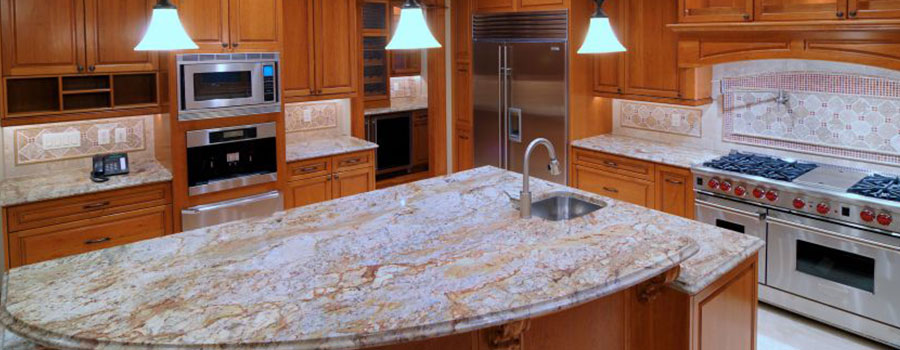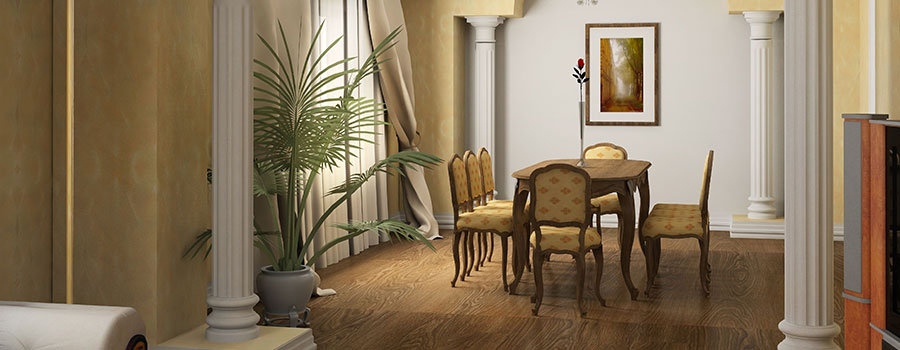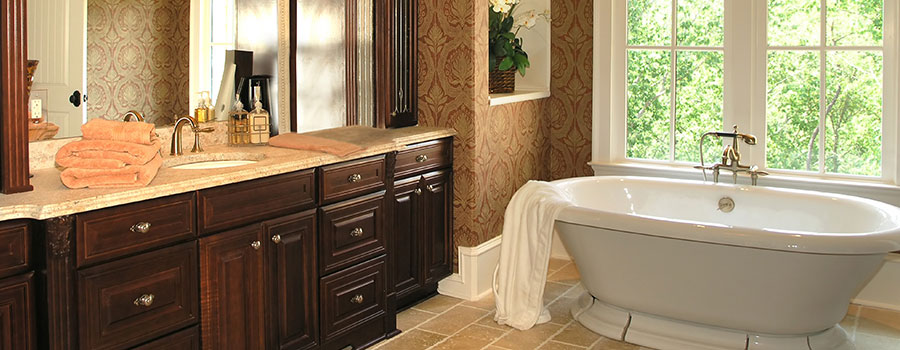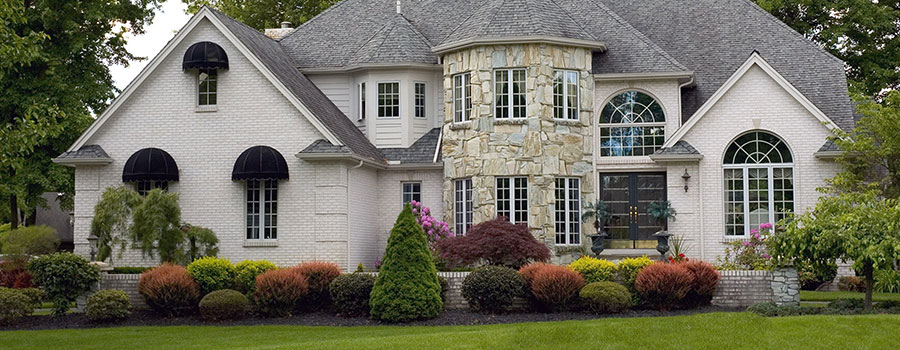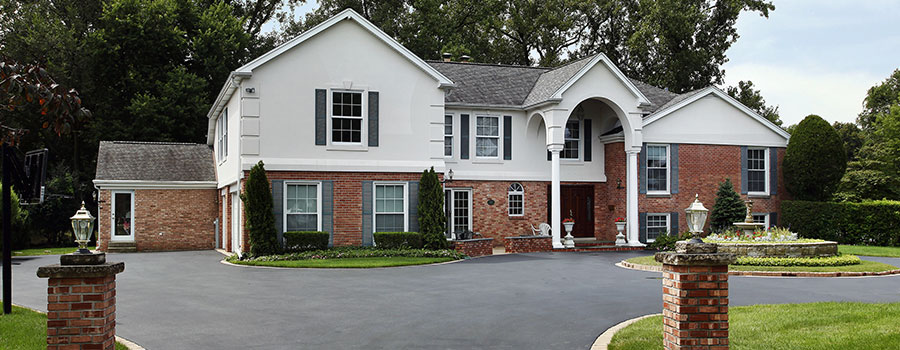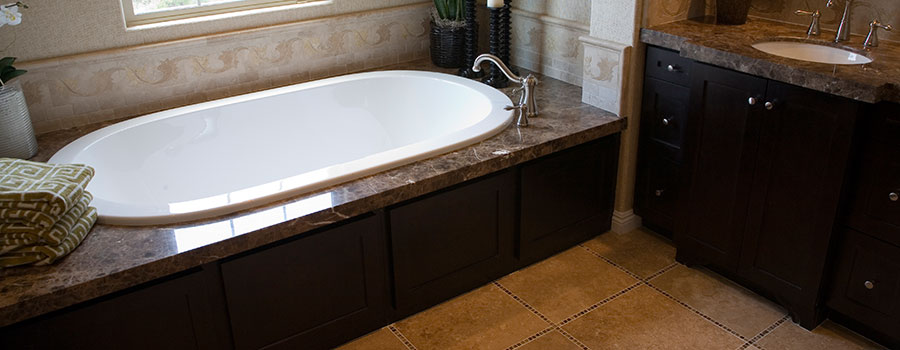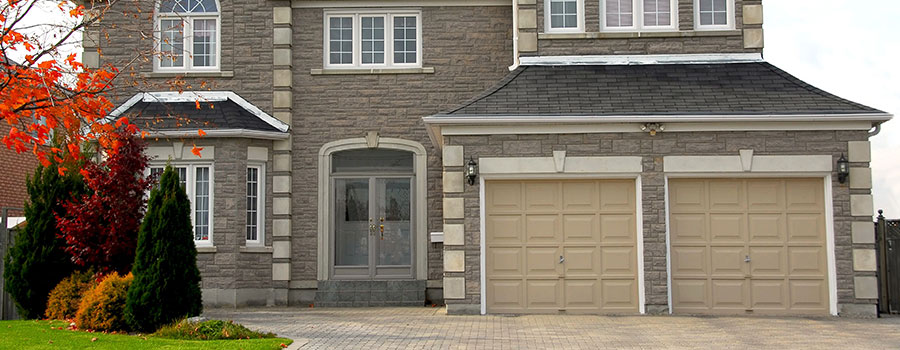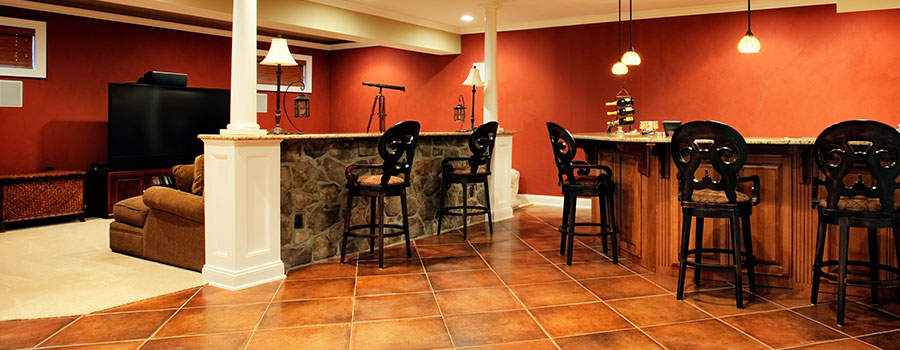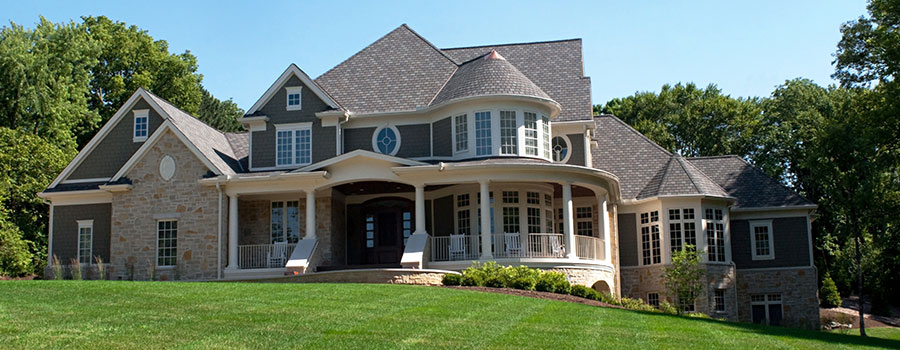Kitchen Remodeling Best Practices
The kitchen is one of the most used rooms in the house, and many homeowners choose to redesign it to keep it modern and practical. If your kitchen is worn out and you are looking to remodel it, you should know that you will face hefty expenses. The good thing is that remodeling is a long-term investment that can raise the value of your home. Due to this, you must put your ducks in a row and do the right things so you don’t spend too much time and money on the project. Some of the things you should do include: Have a plan A clear end goal and vision are essential for a successful kitchen makeover. You should note that this is not a nice picture of what you want your kitchen to look like. You need to decide what your life—and your family’s life—will look like in this new space because the kitchen must perform to meet those ends. Before you begin the remodeling, sit with your condo remodel contractors and explain your vision. You should then devise a plan for proceeding with the project. Being realistic is just as vital as any other aspect of home renovation planning. Before acquiring supplies or knocking down walls, ensure you understand what you can reasonably accomplish within your budget and available area. Make sure you’re also practical about upkeep—if you have children and know you won’t be able to tolerate continuous fingerprint smudges, stainless steel may not be the ideal option, even if you prefer the design. Understand the costs involved You should know the amount of money you plan to spend on the project. To do this, select the most crucial features in the kitchen. These include a kitchen island, correctly tiered lighting, increased drawer or cabinet space, and a dedicated food pantry. You should then allocate your finances appropriately. While working, monitor your budget to ensure you stay on track with your kitchen renovation projects. Even after creating your budget, you may find yourself spending more. Thus, it is critical to set aside a contingency reserve. Take time and extensively research possible cabinetry, countertops, flooring, appliances, accessories, and lighting options. This will reduce the chances of making mistakes. You should then set aside a 15% to 20% contingency. Choose the right floor. If you intend to install hardwood floors in your new kitchen, you should be cautious and ensure that you select the suitable wood. You should choose timber treated with the proper finish; a pre-finished sealed hardwood is a good choice. Hardwood flooring can be slippery, whereas a textured surface, such as hand-scraped, distressed, or reclaimed wood, can provide greater traction while concealing kitchen wear and strain. To be safe, use wood with a high Janka hardness rating, such as hickory, so it can withstand frequent use and drops while minimizing damage. The kitchen is the most accident-prone room in the house, so it’s critical to safeguard the areas where slips are most likely to occur when choosing new flooring. Use rugs or pads in front of the fridge, sink, dishwasher, and pantry. Many homeowners choose cork […]
Read moreRenovating for The First Time? Here Is How to Do Right
While remodeling a home can be a fantastic opportunity to transform an old, run-down structure into your ideal abode, it’s not always easy to take on such a large undertaking. There are obstacles at every turn, from missing deadlines to unanticipated structural issues and mistakes in design. Thankfully, by working with the right home addition companies and putting the following tips in place, you will create the home you have always dreamt about. Discuss your ideas with your team. Ignoring to share ideas with your professional team may lead to problems with functionality or quality. Your project manager, architect, or builder will have helped many homeowners remodel their houses, so they may be eager to provide professional suggestions. When you share your ideas with them, they might be able to recommend more affordable materials or different approaches to the design. When you are having a remodeling project, make every effort to be adaptable, but if your heart is set on something particular, don’t hesitate to speak out for it. Remember that there is no way that your professionals will deliver the right product if you hire the wrong ones. For the best outcomes, ensure that you work with experienced professionals who know what they are doing. As a rule of thumb, they should have handled a similar project before. Avoid doing anything you don’t understand Although it may be tempting to do most of the job yourself, doing so may result in delays, costly corrective work in the future, and accidents. You don’t want this, do you? For some tasks, it’s imperative that you employ a professional if you lack the necessary skills. For instance, doing plumbing, gas, or electrical work yourself is never a good idea. Doing roof repairs, eliminating asbestos, and tearing down walls without professional assistance are other risky tasks you attempt if you don’t have the necessary skills. For peace of mind, let the professionals do their work. Regardless of how handy you think you are, leave it to the professionals if you have never handled the project before as they will do a better job. You have nothing to worry about as long as you hire the right people. Take your time Moving into a newly purchased house in livable condition for a short while is a good idea before starting improvements. This way, you’ll have more time to determine what works and what doesn’t, and most importantly, how you use the house. It will also help to refine a functional and comfortable design rather than just focusing on aesthetics, from where you put the groceries and how the living areas flow to where the house’s coldest and warmest spots are. Allow as much natural right as possible The way natural light shapes a room is one thing that’s not visible on a floor plan. Before you lock in a layout, get a sense of how different areas in your house feel as the light changes throughout the day. For instance, you’ll probably want the maximum light in your primary family living areas. You can increase the light by glazing choices like expansive picture windows […]
Read moreHome Addition Tips
While home remodeling can be thrilling, it can also be extremely intimidating. You get to bring your vision to fruition, but at the same time, there are many things to think about. Imagining the new space and its configuration, furnishings, wall color, and design elements can inspire fresh ideas, and you are forced to do away with the original plan. While this is the case, it’s crucial to remember that a lot of planning still needs to be done before you start the project. Here are suggestions given by home addition companies to help you plan your home expansion and get your renovations off to a good start: Understand your objectives Even though it might seem simple, it’s crucial to have an honest conversation with yourself or your spouse about the goals of a home addition. You must decide whether the expense and inconvenience of a new house addition are worthwhile for you and your family. Before beginning your renovation, evaluate your lifestyle and home and consider how these adjustments can enhance both. Gather the necessary inspiration. After deciding on the precise house improvements you want to make and the project’s overall objective, you will need to gather some inspiration. You must have ideas for the new space’s layout, design, and use. Thankfully, there are plenty of places where you can find ideas. Excellent sources of inspiration include buying guides, home design magazines, Pinterest, and even visiting open houses. Gather the necessary legal documents. It’s not always as easy as picking a decision, hiring a contractor, and buying new wallpaper when adding an addition to your house. For most, any house extensions need a permit, which you must apply for. Obtain a copy of the plot drawings for your property to ensure an extension doesn’t cross over onto neighboring land or cross property lines. You can also obtain your home’s plans and surveys from the local Registry of Deeds. Ensuring a house expansion doesn’t exceed the property plans is crucial. This is because anything constructed outside of property boundaries may result in needless legal issues. Plan your budget Your budget should guide you in deciding the size of your home expansion. This is one of the most crucial factors to consider when organizing a home remodeling project. You will need to consider every small element when creating your budget. This covers the cost of materials and contracts, utility assessments, and permits. Remember that your extension ambitions may be accommodated by a realistic budget that may be determined with the assistance of an architect or remodeling specialist. Understand what you need. After establishing your budget, you must evaluate what you need for your new home addition. This refers to the material conveniences in your particular room. Will you need new flooring, an air conditioner, a bathroom, or a bed? If money is tight, just add the necessities to your list and then decorate your space with the finer elements when you can afford it. Put together the right team. The people you pick to complete the work for you will significantly impact the result and success of your home addition. Remember, […]
Read moreCommon Mistakes Homeowners Make When Remodeling Their Condos
Studies show that many homeowners make plenty of mistakes when remodeling their condos. These mistakes include: Going for the cheapest contractors The quotes you receive from several condo remodel contractors you interview will differ significantly. The majority of them most likely lie in a similar mid-range, with one perhaps being high and another relatively low. A frugal homeowner may believe they have found the solution after seeing that inexpensive estimate, but things are not as simple as they seem. Perhaps the contractor omitted something from your quote, which is why it is substantially less than the others. It’s also possible they’re giving you a quote without including the cost of permits or debris disposal, or they’re using technicians with less experience or lower-quality supplies. Regretfully, there are instances where the contractor may be purposefully deceiving you. It hurts to learn about it, but it does occur. You should avoid contractors who refuse to provide a receipt or who offer a discount in exchange for payment. This is because these are often signs of dishonest contractors. You should note that there’s usually a valid explanation if a quote is low. When you receive a quote that is much lower than the average, you shouldn’t rush to take it. Instead, you should be concerned about the caliber of the job. If you believe that hiring a professional is pricey, consider the expense of hiring a professional to correct amateur work that you attempted to save money on. This is a note to say that you should go with the highest quote to guarantee quality work. It’s probably not real if it seems too good to be true. When you receive the quote, inquire if the contractor has defined every material by brand, model, and finish. Next, find out if the quote covers every task included in the project, line by line. To be safe and ensure that you don’t hire a contractor that you later regret, you want to see a lengthy, in-depth quote. Short and superficial ones will simply not do your project any justice, so you should avoid them. Focusing too much on the aesthetics There is always the allure of a fresh, modern kitchen or bathroom, but don’t be in a rush. And don’t prioritize fixing cosmetic issues over structural ones. To be safe, take your time and hire a contractor to conduct a house inspection before beginning any new job. This ensures that you know precisely what you are getting into before renovating. Inspecting the house also helps you budget for the remodeling and devise a plan for how you will go about it. When remodeling, take care of structural problems with your home first. This calls for you to start with the foundation, windows, doors, roof, etc. After that’s finished, you can go to the house’s interior. While at it, also ensure that all the parts of the house are working as well as they should. For example, confirm if your kitchen exhaust fan is strong enough. Does it properly vent out of the house, or does it vent into the attic? Find this out and fix […]
Read moreHow to Sequence a Home Renovation
You might be unsure of where to begin if you’re planning a large-scale home renovation that will take place across several rooms and projects. You might wonder whether it is better to start in public spaces like the living room or kitchen to clear the path. Or you should focus on out-of-sight places so the communal spaces remain useable for longer. If you are in this dilemma, here is a guide given by home addition contractors on how to sequence your home renovation. Before starting the project, you must decide who will handle it. Will you conduct the remodeling yourself, or do you want to hire an expert to do it for you? You should make a detailed plan that includes a timeline, budget, and a list of all the rooms you intend to renovate before starting any renovation. If you are having an issue with any part of the project, consult a professional to help you out: Start with the highest-priority rooms You should start with the renovations in your first-priority room and move on to the cosmetic adjustments once the repairs are finished. To most people, this is the kitchen. This way, if you run out of money or energy, at least you got the most important area done. This makes deciding where to start very personal, but ultimately, this will be the most fulfilling approach for you. Renovations to the kitchen might be more involved and take longer than those to other rooms in the house. If you’re living in your home while renovating, starting with the kitchen can help you rapidly return to a sense of normalcy in the space. Move to the next most intense room. If you begin with the kitchen, this is probably where the bathroom will go. The hardest renovation jobs in your house will be in the kitchen and bathroom since these spaces require extensive mechanical, electrical, and plumbing work that frequently needs to be done concurrently. After the kitchen, consider renovating your bathrooms. Renovate your bathrooms one at a time. This ensures that you can always have a shower and toilet if your house. You should prioritize your kitchen and bathroom while remodeling your house because these areas are known to be costly to update. They also need a lot of work, and it’s always wise to finish the more difficult tasks first. The kitchen and bathrooms are high-value rooms, so if you finish these, you will probably have added value to your house. Proceed to the living room. Once you are done with the bathroom and kitchen, proceed to the living room. You should renovate your primary living or family room to create a comfortable space for relaxation and entertainment. This room can serve as a temporary gathering place while other renovations are ongoing. Turn your attention to the bedroom. You can turn your attention to the bedroom once you have updated your living areas, kitchen, and bathrooms. This is because the bedroom allows you to keep normalcy throughout the process, which is essential to reducing stress during a renovation. As you can tell, having your bedroom available will […]
Read more8 Signs It’s Time to Remodel Your Home
Getting into a home remodeling project is significant move, but it is well worth the cost once you have the home you want. Maybe you’re ready to start the process or unsure if now is the best time to hire home addition contractors and start. The truth is that a well-designed renovation can increase your home’s value while also changing how you live. To help you out, here are some things to look for when deciding whether it’s time to remodel your home: There are obvious signs of wear and tear Deterioration can cause structural difficulties, such as a leaking roof, decaying floorboards on a front porch, or the need for fireplace and foundation repointing. It’s also possible that your carpets have been worn and weathered for a decade or more or that tiles in your kitchen or bathroom have come loose. Property degradation issues should not be overlooked because they cannot only lead to more expensive problems in the future (such as a roof, foundation, or porch failure) but also likely affect your satisfaction with the property and ability to market it later. So, if your property has apparent signs of wear and tear, it’s time to remodel it. Your home feels old and out of date. Perhaps it’s the 30-year-old bright brass fixtures in the bathroom or the linoleum floor in the kitchen. Is your living room fireplace a holdover from the 1960s? Does having dark-stained cabinetry make your kitchen feel like a cave? If you believe your home needs to be updated, a remodel is most likely necessary. Whether it’s a whole kitchen makeover with airy white cabinets and brushed nickel fixtures or a living room renovation with a modern stone veneer fireplace remodel, new carpeting, and fresh paint in contemporary hues, you must do it. Remodeling your home for a more modern appearance can not only make you happier in your surroundings, but it will also help you maintain (or maybe increase) the value of your home. Remember to discuss it with your contractors so that you can install the correct units for your project. The space isn’t functioning as well as you would want Do you get upset whenever you cook because you don’t have enough counter space in the kitchen? Do you feel overwhelmed by clutter and insufficient storage space? If your home environment isn’t working correctly for everyday life, you might want to hire an architect to figure out why and what you can do about it. Perhaps you should open up your kitchen and install a bar for additional storage and a workplace. Perhaps you need one or two walk-in closets and a built-in entertainment center surrounding your living room fireplace. If your room does not fit your lifestyle, it may be time to renovate. You are not using the space you have Perhaps your guest bedroom has not seen a guest in ten years, or your dining room only sees a set table once a year for a holiday celebration. If you have a lot of unused space in your home, try making it more usable. Perhaps you can knock down […]
Read moreHome Additions: Why You Need to Hire Home Addition Companies
When you are having a home remodeling project, you might be tempted to do the work yourself so that you can save some money, but this isn’t a good way to go about it. Instead, you should hire home addition contractors. The reasons you should hire the contractors include: Home addition projects are complex and need planning Planning a house expansion is not a simple undertaking. Even with a relatively simple room expansion, there are more difficulties that you might expect to face. There are thousands of considerations and choices to make, including clearly defining your objectives and assessing the feasibility of the addition, setting a reasonable budget, engaging the proper expertise, acquiring permissions, and designing the addition. So clearly, adequate preparation is important, and made much easier with the support of a competent firm that will manage all these things and more. A skilled contractor has the skills to oversee the entire home addition process. When hiring, ensure the contractors you hire are qualified design and construction professionals who specialize in house extensions. They also should be able to undertake all the tasks involved in the extension. This way, you won’t need to keep hiring new talent. From beginning to end, the designers and constructors should collaborate, coordinate details and materials, and ensure the process is as streamlined as possible. From initial concept to post-construction, the team should deliver a well-managed and efficient service. As mentioned, the contractors should communicate and collaborate with you, providing appropriate options, assisting you in making decisions and guiding you through product and material selections. The team should also provide you with the assurance of a precise budget and a manageable timeline. This way, you are confident that they will complete the work in the best way possible. Home additions have many moving parts. Planning a home addition takes careful thinking and a systematic approach to ensure a successful and easy process—and there are numerous details to handle. When working with contractors, a dedicated Project Manager is your best ally and advocate throughout the whole process. It is the Project Manager’s responsibility to collaborate with you and the designer while overseeing every construction detail. The Project Manager ensures that all materials arrive at the appropriate time, that all work is completed on time, and that no details are ignored. The project manager also facilitates and maintains effective communication among all parties involved. The house addition project is not complete until the project manager ensures that each phase is satisfactorily performed and meets quality requirements. Your project might need design expertise Because of its intricacy, you should work with an architect or designer to develop a precise plan for your house addition. Consider the layout, aesthetics, functionality, and integration into the existing structure. It is also critical to verify that the design matches your vision, lifestyle, and any unique needs you may have. A well-planned and effective home addition design will match the rest of your property. It should blend seamlessly with the existing structure and reflect your personality, house style, and property attributes. A reputable firm has the training and experience to analyze all […]
Read moreHow to Make an Addition Look Good.
While naturally increasing square footage allows you to enjoy your house (and neighborhood) for many years, incorporating your expansion into your home’s current architecture is not easy. To get it correct, hiring home addition companies is usually necessary. It’s a fact that home extensions, whether built outward or upward, are challenging. However, there are several things you can do. These things include: Ensure the foundation matches. Every home addition is built on a solid foundation; the floor and roof lines or elevations must match. It is also critical to ensure that the foundation is deep enough to extend below the “frost depth” in your area. The depth requirements vary by region based on the local weather. Building over the frost depth causes the addition to shifting independently of the main structure as the ground freezes and thaws, potentially causing foundation issues. Furthermore, ensure that the foundation is adequate for the soil type in your area. Again, failure to do so may result in long-term shifting problems for your new addition. Your home expansions should also fit the original structure’s foundation. If your existing home is built on a slab foundation, the addition should be built on the same foundation. If your original foundation is crawlspace, the addition should be as well. This ensures the addition is beautiful, level, and seamless from the ground up. Ensure the exterior finishes match. Start with the roof and work your way down. Every aspect of your room addition should match the old home, including trim, windows, siding, doors, hardware, and paint colors. If you have a historical home, matching precise finishes might be more difficult, especially if some fixtures are no longer manufactured. Home additions do not have to match exactly, but the design should always be complementary in the following aspects: The roof: Your addition’s roof should closely match your existing home’s rooflines. This entails replicating the pitch, soffit style, overhang, eave depth, rafter size, and spacing. It also implies you may have to contemplate a whole new roof. Older shingles on the original property may be faded, making it difficult to match shingle colors on a room addition, for example. If your roof shows signs of age, it may be time to replace it entirely. Look out for siding colors and other exterior finishes. If your current siding is faded, it will not match the new siding on the home addition. Using the same color and trim style can also help tie the two structures together. If you have brick or stone exteriors, they might be difficult to replace, but there are inventive methods to mix and match finishes that still look good and flow well together. The idea is to select colors and finishes that complement one another. Windows and doors: These days, it’s getting easier to obtain custom windows and doors that fulfill current Energy Star ratings and building requirements while having historical measurements and styles that may match those of your old home. While this is the case, precise matches are not always possible, so explore designs that complement the existing style. You can also replace outdated goods with newer ones […]
Read moreIs It a Good Idea to Add On to Your House?
This is a good question, and the answer is, “It depends.” Every home and homeowner’s needs and demands are unique. There are numerous aspects to consider when planning an addition to your house; some are obvious, while others are likely something you haven’t considered. The factors to consider, as given by home addition companies, include: Financial aspects When it comes to the finances, you need to think about the project’s final cost. This is because this is the single most expensive improvement you make to your property. To put it in perspective, most large additions are similar to building a new home. A home addition will contain all of the expenditures associated with building a new home, such as design, permitting, foundations, framing, HVAC, plumbing, electricity, insulation, windows, and so on, in addition to the price for the upgrades required to integrate the addition into the current home. It’s a significant investment, so do your homework before embarking on a home expansion project. If you are renovating the house for resale, you should think about the resale value of the property. Depending on what is included in your house addition and how long you want to live there, you may not be able to fully get back the cost of your addition when you sell it. As a general rule, if you want to stay in your house for less than 5 years, a home addition is unlikely to be the wisest investment for you. If you intend to stay for an extended period, speak with a realtor to determine the resale value of your neighbourhood’s homes. Remember that it’s not a good idea to be the most expensive house on the block, but if you notice a lot of home upgrading going on in your area, you can bet that the additional cost will be absorbed when it comes time to sell. Emotional considerations Why do you feel you need an addition? Is it because you feel cramped, need additional private space, or are you simply weary of the clutter? You should think about this and find out if there are ways to restructure the space you already have. Are there any unused rooms in your home, such as a basement, attic, or even a large living room you rarely use? Remodeling existing rooms is less expensive than adding a new structure to your home, and a smart contractor will think “outside the box” to identify solutions that do not require an addition. If you decide to build on or conduct a substantial renovation, ensure that the finished project is comfortable, safe, and aesthetically pleasing. When building an extension, it should not be as simple as adding a box to a certain area of your home. It should be about creating a space that visually flows from old to new, both inside and out. Practical considerations Are you on a tight lot? Are there any setback requirements that come in the way of you adding a room to your home? Are you in a community with a Home Owners Association (HOA) that has tight rules about how you can […]
Read moreTips to Having a Great Time Remodeling a House
You’re probably extremely excited if a home remodel is on the horizon. Everyone loves a new home design, but first, you must be cautious about how you go about it. Some house renovations can take weeks or months to complete, depending on how extensive they are, and in rooms such as the kitchen or bathroom, this schedule may appear unrealistic. Thankfully, with a little preparation and foresight on your part, you’ll come up with ways to ensure that you have a great time in your remodeling. According to home addition companies, all you need is mental fortitude and put these tips into place to ensure you have a good experience. Place your orders as early as possible. Every remodel will run into unexpected bottlenecks that might cause the project to be delayed. One option for minimizing delays is to order your parts ahead of time. Make sure you’re prepared for the project by having all your parts selected and ordered before starting your project. Either having a lead time as to when they’ll arrive or already having them on site makes a world of difference, as you don’t need to worry about the supplies delaying too much. If you’re rebuilding a kitchen or bathroom and want to upgrade your vanity, hardware, cabinets, and worktops, choosing the fixtures ahead of time will spare you a few hassles during demolition. This way, you won’t be left with a mess in your home or everyday areas that aren’t used for longer than necessary. Cannot decide between different finishes or fixtures? Consult experts who will help with project selection. You only need to ensure that the professionals you hire are experienced and know what they are doing. Consider reconfiguring your space. The flow of a home may not always match your lifestyle; for example, you may require your kitchen to overlook a garden to watch children or pets playing outside, while you may need to relocate the bedroom to the back of a property to reduce outside noise. If you intend to change the property’s layout, now is the time. It is significantly easier to relocate living rooms or bedrooms than kitchens and toilets, which may require extensive plumbing work. If you remove a wall to create an open-plan space, consult a structural engineer to ensure it is not load-bearing. You also should think about your electrical system; you may need to work to bring it up to code, or you could use the chance to install additional sockets or light switches. Aim to keep the air as fresh as possible. During demolition, expect a lot of dust in the air due to sanding and other operations. To avoid ruining your property too much, take precautionary measures to keep dust particles from entering your ducts and returning to the air. If you’re working in a bedroom with a return duct, tape it off—though it’s not ideal for permanent use—when the demo is happening or sheetrock is being sanded, anything that creates a lot of dust should be blocked off. Although your contractor will take precautions to keep the remainder of your home dust-free, this […]
Read more
